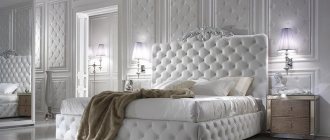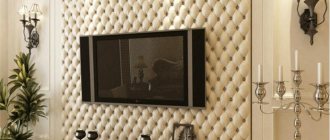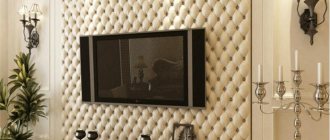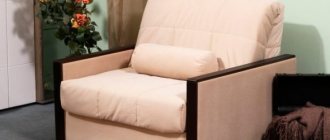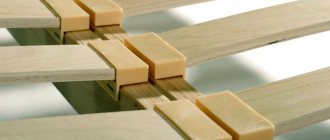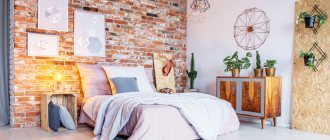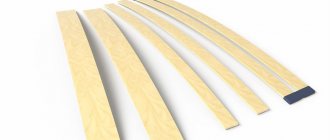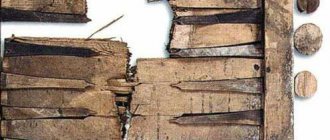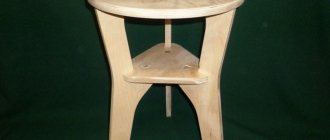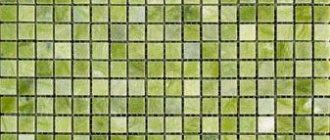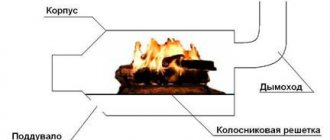Do-it-yourself carriage screeding is a rather complex but fascinating process that anyone can figure out. The use of the carriage screed technique is gaining great popularity around the world, because it is one of the most interesting types of finishing. The main advantage is that you can decorate your furniture in an unusual way - you just need to prepare all the necessary materials, accessories and follow the detailed instructions.
DIY carriage screed
Carriage screed: features and differences
The carriage screed has its name for a reason. Its use has been known since the mid-18th century. At that time in France, during the reign of Napoleon III, this type of decoration was actively used to decorate the interior decoration of carriages. "Capitone" was considered a symbol of wealth, luxury and high status of a person. Later, the carriage screed technique began to be used in other European countries, appreciating its beauty.
Until now, the popularity of such finishing of backs and other furniture elements remains quite high. For example, one of the signs by which you can recognize a soft Chesterfield sofa.
It is loved by those who do not tolerate trivial decisions in the interior and are always looking for special and unique things for their home, be it furniture, interior doors or accessories.
The Capitone technique is also used to decorate large wall panels that occupy the entire space from floor to ceiling, various furniture elements, be it the back, armrests or seat.
Sometimes it is used to decorate various small interior items, such as pillows or mattresses. It is very easy to recognize a carriage tie: it always has soft upholstery, which seems to be held together only by buttons. In this case, the stretched fabric forms a symmetrical pattern: squares or diamonds of the same size.
As a rule, for the outer upholstery of chairs, sofas or beds, dense and wear-resistant fabrics are chosen that are easy to clean and will last for many years. Usually it is: leather - natural, artificial, eco, suede, flock, velor or velvet.
Buttons with threads, special furniture nails decorated with rhinestones, pearls or beads are used as fixing elements.
Furniture pieces with a carriage screed design
Upholstery using the capito technique can decorate any upholstered furniture. However, most often in the interior there are sofas, poufs, beds, armchairs and chairs. Let's consider the subtleties of their design.
Sofas, armchairs
Options for sofas with carriage screed: straight, corner, island, semicircular, modular. The products will decorate the living room, dining room, bedroom, nursery and office. All types of equipment are suitable for decoration.
Chairs with such upholstery can be either framed or frameless. A square pattern is suitable for compact furniture, and a diamond pattern is suitable for models with wide seats and high backs.
There are several upholstery options for sofas and armchairs. You can choose models that are fully decorated with patterns or choose ones with designed backs and armrests.
Advice! Chair models made in the form of a high throne look luxurious. They will become an exquisite highlight of the office, dining room or kitchen.
Armchairs with carriage screed in the interior
Sofa with carriage screed in the interior
We invite you to look at the original sofas and armchairs in implemented design projects:
- Petrovo is distant. Sofa
- Uralsk Sofa and armchairs with decorative upholstery
- Peace Avenue. Designer sofa
- Millennium Park. Quilted sofa
Beds
Beds with a high headboard are often decorated using the capito technique. The volumetric soft back acts as a catchy decorative element that immediately attracts attention. The element creates a sophisticated contrast with the monochromatic wall design.
Bed with carriage screed in the interior
Implemented projects of bedrooms with beds decorated with an unusual screed:
- Discord. Guest bedroom
- Uralsk Bed with carriage headboard
- Uralsk Bedroom No. 3
Poufs
Poufs with a carriage tie will fit perfectly into the living room, bedroom, and children's room. Round models, fully decorated with figured upholstery, look impressive in modern interiors. No less interesting are specimens of a streamlined square shape.
In a classic interior, rectangular pieces with curly low legs look organic. The combination of wooden supports and soft decorative cladding is a bold, non-trivial solution.
Poufs with carriage screed in the interior
Our designers' ideas:
- Nightingale Grove. Pouf with carriage tie
- Apple orchard. Bedroom
- Tashkent apartment. Bedroom
- Yalta sea descent. Master bedroom
Pros and cons of cardboard screed
Why do many people prefer to make Capitone upholstery themselves rather than buy a ready-made product:
- you have a chance to make truly unique furniture that you will not see anywhere else;
- the design, color scheme and style will completely match your interior or fit perfectly into the design that you want to bring to life;
- there is no need to choose from limited options, because you purchase all the necessary materials yourself: fabric by color, texture, density, price;
- You will significantly save your budget by doing everything yourself.
Of course, before you start tightening the head of the bed with a carriage tie, you should carefully study the instructions and think through all the steps.
INTRODUCTION.
After moving from an apartment to a new house, it so happened that our bedroom was the only room in the house without new furniture, and the double bed from the old apartment moved with us.
It was a bed made of laminated chipboard, a simple design from Shatura-Furniture, with a retractable under-bed drawer. After some time had passed, we soon agreed that it was time to think about a new bed. Again, I didn’t really want something simple, but for interesting options, with decent quality, the price tag is generally so steep that you again start to think - what’s so bad about the old bed)). The idea of making a bed yourself was prompted by a review by the respected shurik_ss with the review “An ordinary double bed. Made of wood. Pure DIY, nothing to do with products”, as well as the Youtube channel of the interesting master CHEST’ER. I saw that, in principle, I could do this myself, especially since I had all the tools. Before that, I had to make my own furniture (cabinets, cabinets) from laminated chipboard, everything was simple there, but here I had to construct it.
I figured out the bed design in Sketchup, double bed 1600 x 2000 mm, headboard height 1360 mm from the floor, height of the mattress plane relative to the floor - 520 mm.
The bed was planned with a lifting mechanism, with a storage compartment at the bottom. I didn’t dare to make my own orthopedic base with a lifting mechanism, so I bought a ready-made base from this link: Orthopedic base for bed, 160*200 cm (lifting).
Having measured the orthopedic base, it was possible to proceed to determining the exact dimensions of the front and side frames of the bed. Plywood was chosen as the material for making the frame. From a constructive point of view, I like this material more than chipboard or pine/larch lumber. The only problem is the limited length (1520 mm) of the sheet of publicly available plywood; it simply is not enough for the length of the side drawer (2020 mm), but this drawback was solved.
Sketch of a carriage screed for a bed
First of all, decide for yourself what you like best: a rhombus or a square. Draw a rough sketch.
For the first upholstery, the headboard itself (if you are new to this business) is better to choose a standard shape - rectangular or square. At the next stage, decide on the material with which you will cover the soft base. Give preference to special furniture fabrics, as they are denser and wear out more slowly. Try to avoid the usual tailor's linen, no matter how much you like it. Fabric that is too thin can be damaged during the stretching stage. As a rule, plain fabrics are used for carriage screeds, very rarely with a printed pattern, which is caused by the peculiarities of the technology. The fact is that when tensioned, the drawing becomes deformed and does not look so impressive. When using fitted buttons, you will need a press. Purchase it in advance or take care of making the necessary fasteners in a furniture workshop. You can also look at the range of furniture buttons in specialized stores.
Making buttons
How to make beautiful and reliable buttons? This is probably the most important question in a carriage tie. Despite the fact that ready-made options are now not difficult to buy, it is still often impossible to choose the exact shade.
In this case, you will need to purchase upholstery material with the necessary reserves. When purchasing a base for buttons, you should choose those that have an iron ear - plastic ones break very quickly.
Step-by-step instructions for tightening buttons yourself:
- cut the textile into strips twice as wide as the existing base;
- we cut squares out of them, and they, in turn, turn them into circles;
- after that, small stitches are made along the edges of the shred with a needle and a strong thread folded in half, gradually tightening the edge - eventually the material should wrap around the button;
- The smaller the step, the smoother the fabric will lie.
This process is very painstaking and also takes a lot of time, but undoubtedly the result is worth it. If there are no special problems with finances, then it makes sense to save time by purchasing factory-made universal buttons, the heads of which have a special rim that fastens the fabric.
Materials for making carriage screeds
Once you've prepared your sketch and decided on your supplies, it's time to think about what other tools you'll need. Here's what you'll need:
- a sheet of plywood that will serve as the base of the headboard (it will need to be given the desired shape);
- a piece of thick furniture fabric with a margin (it should be significant, since a large amount of it is spent on the formation of folds);
- furniture buttons;
- soft base (foam rubber) with a thickness of 5 cm for the headboard;
- synthetic filler;
- fastening and improvised tools: furniture stapler, knife, scissors, bookbinding needles, drill with a tsifenbor attachment for creating straight holes;
- glue.
Before purchasing foam rubber, check its purpose (usually indicated on the packaging by the manufacturer). Don't forget to check the density and elasticity. If these parameters are high enough, then the head of the bed will last a long time and will not deform.
It is also recommended to use specialized glue designed for gluing foam rubber. It should not contain toxic and harmful substances, for example, toluene and trichloroethane. In addition, such adhesives usually do not have good adhesive properties. It is best if you purchase a composition based on neoprene, polyurethane, butadiene styrene. As a rule, adhesives intended for foam rubber are characterized by low or zero toxicity, bond surfaces well, forming a strong seam, are relatively elastic and moisture resistant.
Design styles
Nowadays, designers offer a large selection of interior styles:
- Classical. For such beds, the soft headboard is usually framed by carved wood covered with gilding. Here you can use decorative elements in the form of columns and traditional patterns;
A light headboard looks especially good - white or beige, and lots and lots of wood.
- Empire style This style is, first of all, characterized by ancient Egyptian and Roman elements, patterns on military or antique themes (for example, spears, laurel crowns), dark wood with an abundance of gilding;
All attention is focused on the bed in the bedroom. Therefore, she must be truly royal.
- Baroque. The distinctive feature here is the complex and overly lush decor, in which there are no straight lines, but various leaves, stems, curls, and the like are used. A lot of gold-plated elements are also used;
Bedroom design in a palace style is chosen by people with refined taste.
- Rococo. It is distinguished from the previous style by less luxurious decoration, sophistication, sophistication and smoothness;
The bed, without exaggeration, is the queen of a bedroom interior in the Rococo style.
- English style. This is necessarily a bed made of dark or mahogany with a soft headboard, which is often curved at the edges in the shape of the Russian letter “P”. Decorative elements are carved parts and rectangular overlays;
The English style in the bedroom is distinguished by grace and modesty.
- Modern. This style uses intricately intersecting lines. Typically, materials such as glass and metal are used. Often a decorative element may lack symmetry;
Art Nouveau combines versatility and practicality, elegance of form and luxury.
- Ethnic styles. Decorative elements originating from the cultures of various nations are used here. The most significant example is the use of Japanese themes;
Japanese-style beds are now at the peak of popularity.
- Modern (high-tech). This style is characterized by the use of plain elements in white or gray. Straight lines predominate. Metal and glass are used for decoration.
A bed in high-tech style means the convenience of life using the most modern technologies.
You can also mention such styles as country, shabby chic, chalet, rustic, marine and others.
How to prepare the base for a headboard
Before making holes in a sheet of foam rubber, markings should be made.
Take a marker and a long ruler and draw out a diagram of the carriage tie. It’s even easier to cut out a regular rhombus or square from plain paper in advance, and then use it to mark a sheet of foam rubber. At the very beginning, apply two guides - vertical and horizontal stripes. And then place the template with the center at the point of intersection of the axes, and then draw sequentially.
The top marks of the diamonds are where the buttons are attached. This is where you need to make even holes in the foam using a drill. If you don’t have a drill on the farm, you can use a piece of metal pipe, but you will have to work hard to cut through the foam rubber. You can even try to make holes with a stationery knife; during screeding, flaws and unevenness on the furniture will be hidden.
Next, you need to transfer the markings from the foam rubber to the prepared sheet of plywood.
Place a sheet of foam rubber on the plywood and mark points along the holes. Here you can’t do without a drill, since you will need it to make similar holes in the rigid base of the headboard.
At the next stage, glue the foam rubber to the plywood, keeping the holes symmetrical. Do not forget to use special glue for porous materials, and also read the instructions for it. You may need to wait for the adhesive to set on the surfaces. After checking the strength of the manufactured product, it should be covered with a thin layer of padding polyester. Secure it with rubber cement to the foam rubber.
ASSEMBLY OF FRAME AND MANUFACTURE OF CONNECTING ELEMENTS.
Pre-assemble the bed frame. We tighten the front and side drawers with clamps, drill holes and fasten them with M8 bolts and nuts. We attach the side drawers to the headboard accordingly:
Having installed the orthopedic base again through the pre-made holes in the drawers, I was able to measure the exact distance from the bottom edge of the base to the bottom edge of the side drawer. Having obtained this height, we make an internal central jumper, which will strengthen the bed frame and also become a support in the central part of the orthopedic base. We do it according to the same scheme as the kings:
We drill holes and fasten the jumper with four M8 bolts on each side:
We will cover the front and side drawers with artificial leather separately, so it was necessary to come up with fastening the drawers to each other, as well as fastening the drawers to the headboard. Initially I planned to make fasteners from metal corners. But then it would be necessary to make support platforms for the orthopedic base in the corners. I sat, thought and decided to make a universal structure that would allow me to fasten the drawers, serve as a support for the orthopedic base, and also serve as a platform for the legs of the bed in the front.
I decided to make it from 18 mm plywood. I sawed the parts of the new connecting unit on the sawing table, made holes and fastened everything with glue and screws:
At the front of the bed, we add legs to the connecting elements, which were purchased at a local furniture hardware store:
We put the connecting elements in the corners, drill holes, fasten them with M8 bolts, three bolts on each side (6 bolts per element):
To support the orthopedic base in the center from the side of the front drawer and headboard, we make small brackets from 18mm plywood and attach them to two M8 bolts:
After attaching all the elements, checking the fit of the orthopedic base, checking all levels of the supporting elements, remove the nuts from the fastening bolts and hammer the mustache nuts into the drawers and the lower part of the headboard (a very tedious process).
Covering the headboard with fabric
Now the headboard is ready, all that remains is to give it a beautiful and elegant look. Here you will need fabric, place it on the far left side and move gradually up and to the right. Each hole should be secured with two needles, which are brought out through the foam rubber to the back side of the plywood, where the thread is fixed with several zigzag staples using a furniture stapler.
When you walk a little side by side in this way, you will see that the pattern you intended is gradually formed - rhombuses or squares. Once you've finished threading all the holes, secure the edges of the remaining fabric to the other side of the plywood.
Making a template
The success of the event as a whole will largely depend on the correctness of the pattern, so care and accuracy are important when making it.
For the template, take a sheet of cardboard that matches the dimensions of the finished product. The easiest way is to draw a square marking of standard sizes 10x10 cm.
To obtain such markings, you need to apply marks along the length and width every 10 cm using a marker and tape measure, then draw horizontal and vertical lines
When choosing the geometry and size of figures, it is important to maintain proportional compliance
To obtain a geometric pattern in the form of a rhombus, you can use a surface marked into squares. In each square you need to draw its diagonals.
The intersections of the diagonals of the squares and the vertices are marked with a felt-tip pen so that the required geometric figure is obtained. Trace the resulting diamonds with a marker or felt-tip pen.
Holes are cut out at the tops of the diamonds through which buttons or furniture nails will be attached in the future.
